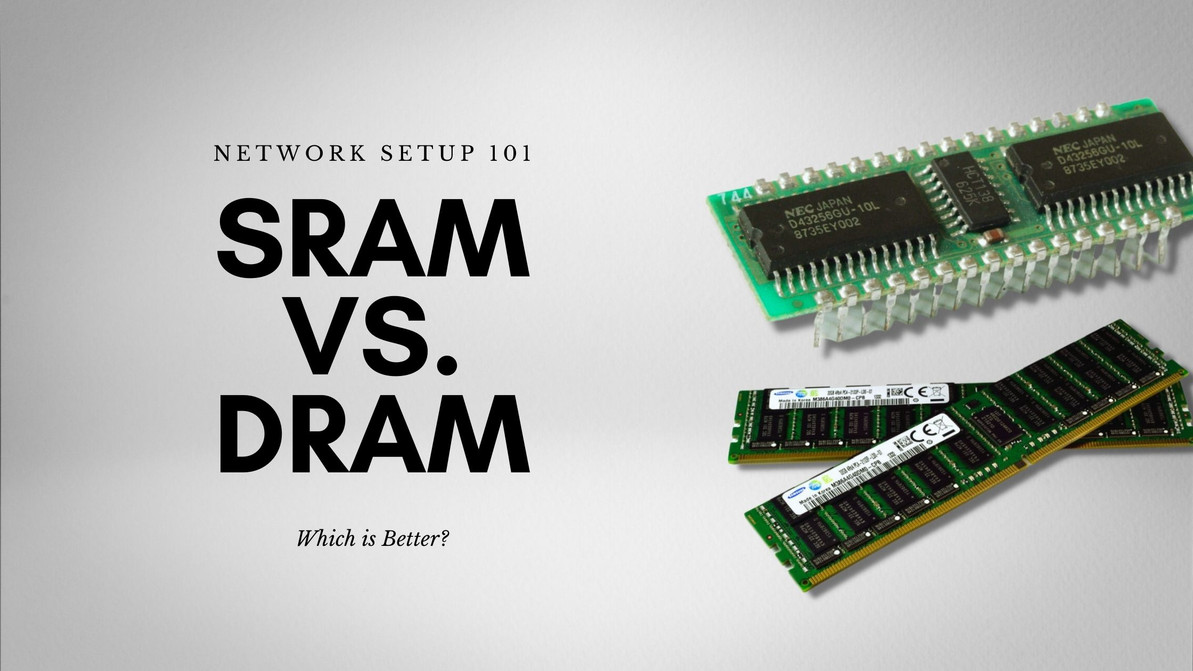Network Setup 101: SRAM vs. DRAM-- Which is Better?
A computer RAM or random access memory is an important component in determining the performance of your system. Your system and applications need a place to store and quickly access data.
The more applications and programs you are running, the more RAM space you need. You will also need hard disk drives (HDD) or solid-state drives (SDD) for your system to reach peak performance.
Different Types of RAM
You can choose from two types of RAM: SRAM and DRAM. You need to make sure that the type of RAM you choose is compatible with the rest of your components.
Here is the definition of SRAM and DRAM for you to better understand them:
What is SRAM?
SRAM or Static RAM is a semiconductor memory that utilizes Bistable latching circuitry to store each bit. This type of RAM stores data using the six transistor memory cells. Static RAM is mostly used as a cache memory for the processor (CPU).
SRAM stores data for as long as power is supplied in the system. It is much faster than DRAM which needs to be refreshed every once in a while.
What is DRAM?
DRAM or Dynamic RAM is widely used as a computer's main memory. This type of RAM is made up of a transistor and a capacitor within an integrated circuit. Data bits are stored in the capacitor.
Transistors always leak a bit which also means that the capacitors slowly discharge-- in turn, information stored in a DRAM tends to drain. This reason is why DRAM needs to be refreshed every once in a while to retain data. By "refreshing" a DRAM, it means giving it a new electronic charge.
Advantages and Disadvantages
Learning the advantages and disadvantages of each type of RAM can help you make an informed decision on the components you choose for your business units and network.
Advantages of SRAM
Here are the benefits of using SRAM:
- SRAM is faster than DRAM which means it is faster in operation.
- SRAM can be used to create a speed-sensitive cache.
- SRAM only has medium power consumption.
- SRAM has a shorter cycle time since it does not require pausing between accesses.
Advantages of DRAM
Here are the benefits of DRAM:
- DRAM is more affordable than SRAM.
- DRAM has a higher storage capacity which enables you to create a larger RAM space system.
- DRAM offers a simple structure.
- DRAM utilizes logic and circuitry which makes the memory module simpler to set up and use.
Disadvantages of SRAM
Here are the drawbacks of using SRAM:
- SRAM is more expensive than DRAM.
- You can lose data if your SRAM is not powered.
- SRAM does not offer to refresh programs.
- SRAM has a low storage capacity.
- SRAM has a more complex design compared to DRAM.
- SRAM reduces the memory density.
- Takes up much more space than DRAMs
Disadvantages of DRAM
Here are the drawbacks of using DRAM:
- DRAM is slower than SRAM.
- It will take you time to access data or information.
- DRAM consumes more power compared to SRAM.
Key Differences of SRAM and DRAM
To further understand which type of RAM you need for your business system, here are the key differences between SRAM and DRAM.
- SRAM has a lower access time compared to DRAM which makes SRAM faster than DRAM.
- SRAM utilizes transistors and latches while DRAM uses capacitors and transistors.
- SRAM is often used for CPU cache units while DRAM is often used as the main memory in computers.
- SRAM reduces memory density while DRAM offers high packaging density.
- SRAM comes in the form of on-chip memory, while DRAM has the characteristics of off-chip memory.
Bottomline
Great speed and performance are necessary qualities for business or corporate networks and settings. Since the speed and performance of your system are directly affected by the amount of RAM you have installed, you need to make the right choices to ensure that your business will not suffer from a slow and sluggish system.
Recent Posts
-
Where Legacy Bays Meet Lightning Speed: The HPE 960GB LFF SATA Mixed Use SSD Built for ProLiant Gen9 and Gen10 Servers
Power and Reliability in Enterprise Storage: HPE 960GB LFF SATA Mixed Use SSD for ProLiant Gen9 and …Dec 14th 2025 -
Solid Confidence in Every Byte: Powering ProLiant Gen10 and Gen10 Plus Servers with the HPE 960GB LFF Value SAS SSD
HPE 960GB 3.5-inch LFF Digitally Signed Firmware SAS-12Gbps Mixed Use Value SAS Multi Vendor SSD for …Dec 13th 2025 -
Where Reliability Meets Everyday Speed: Empowering ProLiant Gen9 and Gen10 Servers with the HPE 960GB LFF SATA Mixed Use SSD
HPE 960GB 3.5-inch LFF Digitally Signed Firmware SATA-6Gbps Mixed Use SSD for ProLiant Gen9 and Gen1 …Dec 12th 2025




